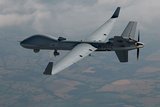AUVSI: ITT and MCS target US Army for FELCO demonstration
The US Army is close to demonstrating the latest in ISR embedded processing systems on board a UAV before the end of the year, industry officials have revealed.
Speaking to Shephard at Unmanned Systems North America in Washington, DC, senior executives from ITT and Mercury Computer Systems (MCS) said a demonstration could take place at Dugway Proving Grounds, Utah on board a Shadow air frame during Q4 this year.
The demonstration, they said, would include the ITT and MCS Federated Embedded Intel-Server for Collaborative Operations (FELCO)- a product of a formal partnership agreement signed between the two companies nine months ago to develop the technology.
Designed to provide the 'fastest means of transforming raw sensor imagery and metadata' from airborne surveillance platforms, the COTS-based FELCO system has so far only been laboratory-tested.
According to Matthew Pellechia, manager, Geospatial Information Solutions, 'the ultimate goal for a processing, exploitation and dissemination (PED) architecture is to synthesise volumes of multi-Intelligence information into formats that directly respond to warfighter requirements'.
A small form factor variant of the FELCO system, which comprises 77 cm3 and weighs approximately five pounds, has already been demonstrated to several customers in a laboratory environment, officials disclosed.
'We have learned lessons from Gorgon Stare including CONOPS [concept of operations] and why users need data and what is processing on board,' Pellechia explained. 'We are talking to the US Army UAV programme office in Huntsville, Alabama about how FELCO could benefit the army's mission across all the different types of assets'.
ITT officials added that the team was currently focusing on low-altitude UAVs as well as larger tactical systems such as the General Atomics Reaper/Predator class of air frames. However, the technology could also be applicable for fixed-wing and other airborne assets.
To date, FELCO has already been adapted to provide interoperability with EO/IR, SAR and FMV sensors and it has emerged that GMTI systems are next on the agenda. It is envisaged that FELCO will eventually be sensor and platform agnostic, ITT and MCS urged.
According to Raymond Petty, VP and chief operating officer at Mercury Federal Systems: 'We continue to run across the perpetual problem across the services of swimming in sensors and drowning in data.
'We want to bring a quick reaction capability to the ISR market to relieve some of the bandwidth and processing bottlenecks in the current infrastructure. We want more [PED] on board with open architecture, systems and standards providing a processing architecture baseline, platform and sensors agnostic,' he told Shephard.
More from Uncrewed Vehicles
-
![What's next for the Pentagon after the Replicator programme?]()
What's next for the Pentagon after the Replicator programme?
Although the Replicator initiative has made several accomplishments, there are still multiple gaps to plug across the US Department of Defense (DoD) and its services.
-
![Cummings Aerospace showcases Hellhound loitering munition designed for US Army’s LASSO programme (video)]()
Cummings Aerospace showcases Hellhound loitering munition designed for US Army’s LASSO programme (video)
Cummings Aerospace presented its turbojet-powered Hellhound loitering munition at SOF Week 2025, offering a man-portable solution aligned with the US Army’s LASSO requirements.
-
![SOF Week 2025: PDW unveils attritable FPV drone for SOF operations at scale]()
SOF Week 2025: PDW unveils attritable FPV drone for SOF operations at scale
PDW has revealed its Attritable Multirotor First Person View drone at SOF Week 2025, offering special operations forces a low-cost, rapidly deployable platform for strike and ISR missions, inspired by battlefield lessons from Ukraine.
-
![SOF Week 2025: Teledyne FLIR white paper provides guidance on reusable loitering munitions]()
SOF Week 2025: Teledyne FLIR white paper provides guidance on reusable loitering munitions
Teledyne FLIR is highlighting the emerging requirements for 'recoverable and re-usable' loitering munitions across the contemporary operating environment during this week’s SOF Week conference in Tampa, Florida.
-
![SOF Week 2025: Kraken Technology group debuts K3 Scout USV in North America]()
SOF Week 2025: Kraken Technology group debuts K3 Scout USV in North America
High-performance maritime industry player Kraken Technology Group, based in the UK, has used the SOF Week conference in Tampa, Florida this week to debut its K3 Scout uncrewed surface vessel (USV) to the North American market.
-
![Palladyne AI and Red Cat to demonstrate capabilities for autonomous drone swarms to the US military]()
Palladyne AI and Red Cat to demonstrate capabilities for autonomous drone swarms to the US military
Red Cat and Palladyne AI recently conducted a cross-platform collaborative flight involving three diverse heterogeneous drones.

























